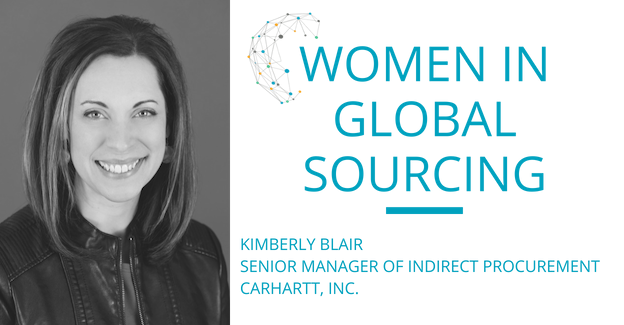Tell us about your career path. How did you get into this field? Was it purposeful or by accident?
I began my career on the manufacturing floor of a tier one automotive company as a production supervisor. At that time, fresh out of college, I had no idea that the lessons from those years – perseverance, grit and unwavering commitment to developing myself as an agent of change – would become the backbone of a multi-directional career in supply chain, eventually specializing in the procurement field. My career path has been an evolution, largely unplanned which has allowed for well-rounded experiences and the ability to hone in on areas that resonated with who I am as an individual and who I wanted to become as a leader. This is a continuous evolution.
Would you follow that same path again if you had the choice?
Without hesitation. The criticality of understanding the manufacturing process and ability to collaborate and partner with operations teams has been the single most valuable skill that I have gained and carried with me throughout my career. I regularly speak to those on my teams and others who are beginning their careers in procurement and always share my experiences, emphasizing the importance of studying and working within the application and origin of what it is we are negotiating and procuring in both the indirect and direct sourcing spaces.
What has been the single most significant development to impact your profession or area of business during your career and why? Do you feel being a woman had an impact on this development?
Globalization and technology. Opportunity cost analysis for procurement was really revolutionized as global footprints began early in my career. The competitive marketplace and potential supplier bases exploded into what we know today as multi-faceted selection environments. Procurement transformation backed by digital offerings such as end to end Procure to Pay (P2P) solutions have not only streamlined the service level offerings that procurement organizations can offer to internal stakeholders, but also have worked as a catalyst for the redesign of sourcing strategies and partnerships within the business.
What do you think are the best characteristics of a strong leader?
Empathy, perseverance and passion
What’s the biggest mistake, workwise, you’ve ever seen – and what were the consequences?
Low cost sourcing (above all else) In the mid to late 90s. The tier one automotive corporation that I worked for initiated a large scale cost reduction initiative with roots in engineering and subsequently, procurement. The program was rolled out across all commodity units. With extremely high percentage cost reduction targets, risks to the consumer were likely. The consequence of poor quality soon became a reality. Global supplier markets, some, untested and unvetted (from a supplier performance perspective) were chosen under the guise of low cost and the tasks that followed to undo the associated mistakes took many years. Working through an initiative such as this, in the commodity procurement environment provided me a real time case study on low cost sourcing that I’ve been able to use many times over to analyze total landed cost, inclusive of opportunity cost, in a more holistic way.
What three words do you think your colleagues and peers would use to describe you?
I’ve worked tirelessly on the last of these three, and am hopeful words such as tenacious, creative and collaborative would be used to describe my work product and leadership style.
Do you think it’s possible to “have it all”— e.g., career, family — and be successful everywhere? How do you make it work?
Absolutely, yes! I think it is critical to find the right cultural fit in order to achieve this, however. Personally, it took me over 15 years to find my current level of contentedness in my work/life journey. With focused perseverance, I have been able to learn that the benefit that I value most in this space is actually work/life integration, which allows me to meld the needs of my children and family into my workday. I believe that having it all also comes with the responsibility to self-advocate. Understanding the current cultural boundaries that you work within is a good starting point. After that, work to harvest relationships with other leaders who have the shared desire to create platforms for change and progression. I remind myself each day not to take for granted the flexibility that has allowed me to be both a great parent as well as a progressive leader.
Finally, what piece of advice would you give to young women starting their careers in the field of sourcing, outsourcing and procurement?
Be bold. Read as much as you can and create your own vision for your desired leadership path. Allow yourself to be inspired and don’t be ashamed or afraid to show passion, creativity and grit. Work for at least one company that is either on or embarking on a procurement transformation, digital or other. The ability to create a vision and execute while securing stakeholder buy in is an experience that all aspiring leaders should be a part of in their careers.






